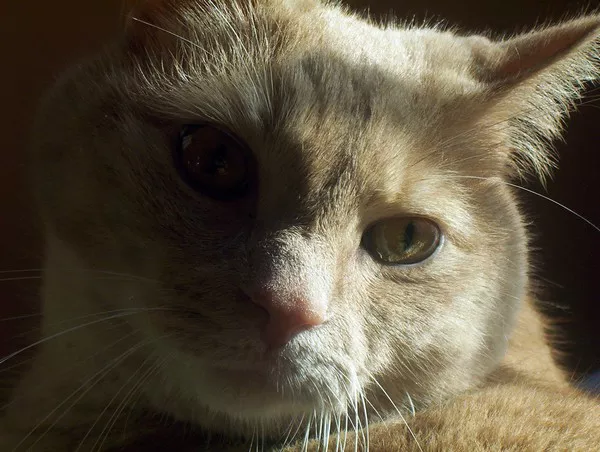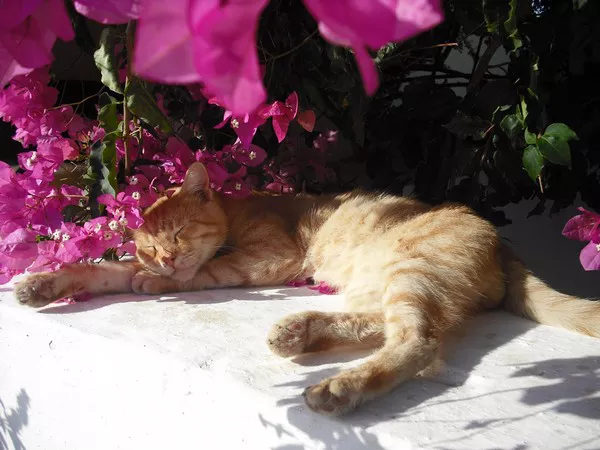The Japanese Bobtail cat is a breed that captivates cat lovers around the world with its unique appearance, playful personality, and rich cultural heritage. Known for its distinctive short tail, this breed is steeped in history and symbolism, particularly in Japan. In this essay, we will explore what the Japanese Bobtail cat is famous for, including its physical characteristics, temperament, historical significance, and its role in art and culture. By understanding these aspects, we can appreciate the charm and allure of the Japanese Bobtail, making it clear why this breed holds a special place in the hearts of many.
Historical Background of the Japanese Bobtail
Origins and Development
The Japanese Bobtail is one of the oldest cat breeds in Japan, with a history that dates back over a thousand years. The breed is believed to have originated in Japan, where it was admired not only for its beauty but also for its hunting prowess. Historical records and artworks from the Heian period (794-1185) depict cats resembling the Japanese Bobtail, suggesting its presence in Japanese society for centuries.
Cultural Significance
The Japanese Bobtail is more than just a pet; it is a cultural icon in Japan. This breed is often associated with good fortune and prosperity, particularly through its connection to the “Maneki-neko,” or beckoning cat. The Maneki-neko is a popular talisman believed to bring good luck to its owner and is commonly found in homes and businesses throughout Japan. The cat is typically depicted with one paw raised in a beckoning gesture, and its resemblance to the Japanese Bobtail has solidified the breed’s place in Japanese folklore and culture.
Folklore and Mythology
In addition to its association with good luck, the Japanese Bobtail appears in various Japanese folktales and legends. One popular story tells of a bobtail cat that saved its owner from a snake bite, further enhancing the breed’s reputation as a protector and companion. These stories contribute to the breed’s mystique and cultural importance, making the Japanese Bobtail a beloved figure in Japanese society.
Physical Characteristics of the Japanese Bobtail
Distinctive Appearance
The Japanese Bobtail is easily recognizable due to its unique physical traits. Some of the most notable characteristics include:
Short Tail: The most defining feature of the Japanese Bobtail is its short, bobbed tail, which typically measures 3 to 4 inches in length. The tail can take on various shapes, including straight, curved, or pom-pom-like, but it will never grow long like that of other breeds.
Body Structure: Japanese Bobtails are medium-sized cats with a slender, athletic build. Their long legs and well-muscled frames allow for agility and grace, making them excellent jumpers and climbers.
Head Shape: They have a slightly rounded head with a wedge-shaped face, prominent cheekbones, and large, expressive eyes. The eyes can come in various colors, including blue, green, or amber, and are often described as having an inquisitive expression.
Coat: The coat of the Japanese Bobtail is typically short to medium in length and can come in a variety of colors and patterns, including solid, tabby, and calico. The breed is known for its soft, silky fur, which requires minimal grooming.
Size and Weight
Japanese Bobtails are medium-sized cats, with males generally larger than females. The typical size and weight range for this breed is as follows:
Height: Approximately 9 to 12 inches (23 to 30 cm) at the shoulder.
Length: About 12 to 18 inches (30 to 46 cm) from nose to tail.
Weight: Generally between 5 to 10 pounds (2.3 to 4.5 kg).
Temperament and Personality Traits
Playful and Affectionate Nature
Japanese Bobtails are known for their playful and affectionate temperament. They are highly social cats that thrive on interaction with their human companions and other pets. Their friendly nature makes them excellent family pets, as they are typically good with children and other animals.
Intelligence and Curiosity
This breed is also known for its intelligence and curiosity. Japanese Bobtails are quick learners and enjoy engaging in interactive play. They often seek out mental stimulation through puzzle toys, games, and social interaction. Their inquisitive nature means they are always exploring their environment, making them entertaining companions.
Vocalization
Japanese Bobtails are known for their distinctive vocalizations. They are more vocal than many other breeds, often communicating with a range of sounds, including chirps, trills, and meows. This vocal behavior adds to their charm and allows them to express their needs and desires effectively.
Affectionate Companions
Japanese Bobtails are loyal and affectionate companions. They often form strong bonds with their owners and enjoy being involved in family activities. Their playful and loving nature makes them great companions for people of all ages.
The Japanese Bobtail in Art and Culture
Representation in Art
The Japanese Bobtail has been a prominent figure in Japanese art for centuries. Traditional paintings, woodblock prints, and ceramics often depict these cats, showcasing their beauty and cultural significance. Artists have captured the essence of the Japanese Bobtail, celebrating its unique features and playful demeanor.
The Maneki-neko
As mentioned earlier, the Japanese Bobtail is closely associated with the Maneki-neko, or beckoning cat. This iconic figure is often found in homes and businesses, symbolizing good luck and prosperity. The Maneki-neko is typically depicted with a raised paw, inviting good fortune. The connection between the Japanese Bobtail and the Maneki-neko has solidified the breed’s status as a cultural icon.
Influence in Modern Media
The Japanese Bobtail has also made its way into modern media, including anime, manga, and literature. Its charming appearance and playful personality make it a popular character in various forms of storytelling. This representation helps to further popularize the breed and introduce it to new generations of cat lovers.
Health and Longevity
Average Lifespan
The average lifespan of a Japanese Bobtail cat is typically between 12 to 15 years, although some individuals can live into their late teens or even early twenties with proper care. Understanding the health considerations associated with this breed is essential for potential owners.
Common Health Issues
While Japanese Bobtails are generally healthy cats, they can be prone to certain genetic health issues. Some common health concerns include:
Obesity: Like many domestic cat breeds, Japanese Bobtails can be prone to obesity if not properly managed. Maintaining a healthy weight is crucial for their overall health and longevity.
Dental Disease: Regular dental care is essential to prevent periodontal disease, which can affect cats of all breeds.
Kidney Disease: Older cats, including Japanese Bobtails, may be at risk for chronic kidney disease, which can significantly impact their quality of life.
Importance of Veterinary Care
Regular veterinary check-ups are essential for monitoring the health of Japanese Bobtails. Routine vaccinations, parasite control, and preventive care can help ensure a long and healthy life for these cats. Additionally, responsible breeding practices can help minimize the risk of genetic health issues within the breed.
Caring for a Japanese Bobtail
Nutrition
Proper nutrition is fundamental to the health and longevity of Japanese Bobtails. A balanced diet rich in high-quality protein, vitamins, and minerals supports their overall well-being. Owners should consult with their veterinarian to determine the best diet for their cat, taking into account its age, activity level, and specific health needs.
Exercise and Enrichment
Japanese Bobtails are active and playful cats that require regular exercise to maintain their health. Providing opportunities for play and mental stimulation is essential. Interactive toys, climbing structures, and daily play sessions can keep them engaged and physically fit.
Social Interaction
As highly social animals, Japanese Bobtails thrive on interaction with their human companions. Spending quality time with your cat, engaging in play, and providing companionship can enhance their well-being and strengthen your bond.
Conclusion
The Japanese Bobtail cat is famous for its unique appearance, playful personality, and rich cultural significance. With a history that spans centuries, this breed has earned its place as a beloved companion and cultural icon in Japan and around the world. From its distinctive short tail to its affectionate nature, the Japanese Bobtail captivates the hearts of cat lovers everywhere.
Understanding what makes the Japanese Bobtail special allows potential owners to appreciate the breed’s charm and unique traits. By providing proper care, nutrition, and social interaction, owners can ensure that their Japanese Bobtail leads a long, healthy, and fulfilling life. Whether as a symbol of good fortune or a cherished family pet, the Japanese Bobtail continues to hold a special place in the hearts of many, embodying the spirit of companionship and joy that cats bring to our lives.
Related topic:

























